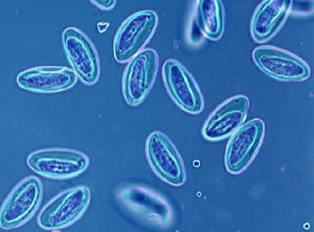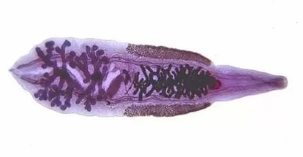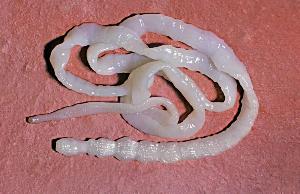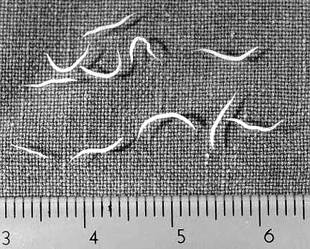
Helminthiasis is one of the most common diseases in children and adults. In the human body can to parasitize various species of worms. There is an opinion, that remote from the medicine that helminths affect only the digestive tract, in fact, that the worms can survive in almost all internal organs – liver, lungs, heart, brain, head and also in muscle tissue, subcutaneous tissue and in the eye. In the article he writes about what worms occur in humans.
Classification
There is a huge amount of deworming, which can hit a person, listed below are the most common of them. Most worms belong to any of the 3 groups – trematodes, cestodes or hookworm.
Flukes – this is a class of parasitic worms of flat-forms, it is known about 40 species of worms that afflict humans. The most common are:
- cat or siberian Fluke (causes opisthorchiasis);
- shistosoma (causing schistosomiasis).
Cestodes – to-tape flat worms. Representatives of cestodes lack a digestive system. Most often think of:
- bullish tapeworm (causes beef tapeworm infection);
- the pig tapeworm (causing cysticercosis);
- Echinococcus (causes Echinococcusoz).
Hookworm – it roundworms is in the first place the abdominal. The most common helminths, affecting the person:
- pinworms;
- ascaris;
- whipworm.
Worms in humans — signs on the photo (most of the deworming affects the GIT, therefore there is nausea and vomiting, diarrhea or constipation, obstruction of the bowels, gratuitous weight loss, lack of appetite or excessive hunger):
Cat or siberian Fluke

Cat or siberian Fluke – a small parasite lanceolate forms from the groups liver gill. The causative agent of opisthorchiasis. Long cat Fluke reaches 8-18 mm, a width of 1.2-2 mm. The parasite develops in the organisms of two masters — intermediate and final. Interim chief – of crustaceans and fish, the carp family, the ultimate man.
Along with the feces of infected people and animals, the eggs fall into the freshwater water, there is a catch, and shellfish. In the body of the clam eggs reach the invasive stage – cercaria, cercaria leave clams and are introduced into the body of the carp family of fish, either they get into their organisms when eating fish shellfish. In the body of a fish the parasite develops into a meta-cercaria, which is in the cyst, its size reach of 0.17-0.21 mm.
When the eating of infected fish infects a person, in his body the meta cercaria leave the cyst from the stomach and the intestines migrate to the liver and biliary channels. In these organs remain to plague, but over 10-12 days to reach Ripe stage, they start to postpone eggs. In the human body of the cat, the Fluke can survive in 10-20 years.
Shistosoma
Shistosoma – blood cells luck. It is elegant dioecious helminths, reach a length of 4-20 mm, width – 0.25 mm. The body of shistosoma is equipped with 2 suckers – oral and ventral, which are located not far from each other. Female shistosoma is longer and slimmer than males. On the body of the male has a longitudinal groove, with his help, holding a female. Their eggs with a diameter of 0.1 mm, oval shape, on the surface of one of the poles is a large thorn.
Human worms shistosoma in the role of the final host to choose people in their organisms are parasitic in the small veins of the large intestine, abdominal cavity, uterus, bladder. The worms feed on blood, partly to suck nutrients through the skin. The eggs of shistosoma are transported to the intestine and bladder, where mature and are excreted out with the feces or urine. In the freshwater waters of the egg comes out the larva, its high host – molluscs. In the body of clams meta cercaria develop into cercaria for 4-8 weeks.
Bullish tapeworm

Bullish tapeworm – tape a parasite, which the disease beef tapeworm infection. This is a huge helminths, able to grow up to 3-12 meters in length. On the body of the parasite is a small crown with a diameter up to 3 mm, stojina, as well as about 1000 segments. After penetration into the organism together with thermal raw infected meat tapeworm, mounted on the walls of the intestines using a 4-x infants.
In the hermaphrodite segments deferred eggs helminth, annually one individual postpones up to 600 million eggs. Similar helminths in humans are parasitic in the intestine of 20 years and more, if you miss the timely treatment.
The pig tapeworm
The pig tapeworm as bullish, on the body has 4 suckers, but in addition, the body of the helminth equipped with a still and a double beater whisk hooks. Reaches two to three meters in length. The pig tapeworm not trilobal inferior ovary, from each side of the uterus has from 7 to 12 branches. A distinctive feature of helminth – ability of the segments crawling from the anus. After leaving out of their shell becomes dry and burst, so to the external environment to receive the eggs of helminth. Middleware lord tapeworm can be a pig and a man.
The main host – man. Intestinal parasites in humans include the pig tapeworm helminths are found in the intestines of the patient, where they lay their eggs. Infection occurs when consuming invasive meat.
Echinococcus
The originator of the Echinococcusozа reach a length of 3-5 millimeters. It consists of a head, on which are four suckers and two halo hooks, and three – four segments. The last of the segments has a developed reproductive system. Interim chief – domestic animals or man, the final host – dogs, wolves. Infection occurs oral the.
Echinococcus gets into the intestine, where the eggs are larvae. Using hooks the larvae penetrate into the system to the portal vein, where along with the blood posted to the liver, lungs, muscle tissue.
Pinworms

Pinworms – roundworms, activators enterobiasis, the so-called disease of dirty hands. To a greater extent disease pinworms exposed children. Infection occurs by the oral, and contact-home by. To detect these worms in the stool.
Female deworming kind of pinworms on the length of the reach 5-10 mm, males – 3 mm. The shape of the body for roundworms fusiform milky-white color. End of the body in female slightly pointed out. Adult worms are parasitic in the lower parts of the small intestine and colon of man, the to the wall with the pain vesicles. To lay eggs, the female worms migrate to the rectum, crawl out and lay eggs in the area of the anal opening, then die. Deferred eggs are invasive already for 4-6 hours. Life expectancy roundworms – one – two months.
Roundworm
Ascaris – are still some representatives of the class of roundworms – parasites, the causative agents of ascariasis. It helminths yellowish – pink color, they have an elongated spindle-like shape, dioecious. The female Ascaris can grow up to about 20-40 inches, the males reach a length of 15-25 cm. Every day an adult female roundworm lays more than 200 thousand eggs, which, together with the feces of humans are excreted into the external environment, where over 12-14 days to become invasive.
In the human body are parasitic in the digestive tract, locates predominantly in the small intestine. The complete development cycle from the invasive eggs into a Mature phase lasts approximately 3 months.
Whipworm
Whipworm – round helminths, which cause trihozefalez. Helminths represent a delicate brown nematodes with a fine threadlike anterior portion and a rounded rear end. A female whipworm can grow up to 3.5-5.5 cm, and males – up to 3-4,5 cm. Larvae worms human localized to the appendix, where, and parasitic up to the stage of puberty, there they lay their eggs. In case of a massive infestation of helminths can also borrow the large intestine including the rectum.
Every day women whipworm put on 3.5 thousand eggs. The eggs of helminths have a barrel shape, covered with a thick brown cloak, the poles are colorless "caps". Eggs reach the soil along with the feces the main guest, in the presence of favorable conditions may keep the invasive properties within two years. The length of the parasitism in the human intestine – 5-7 years.






































